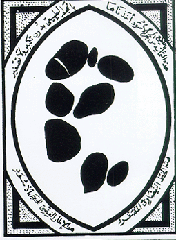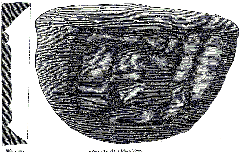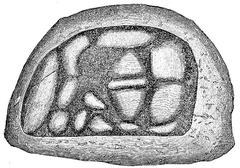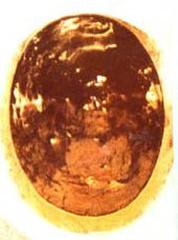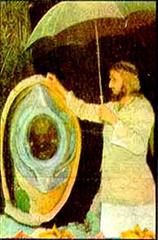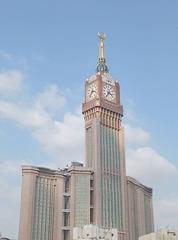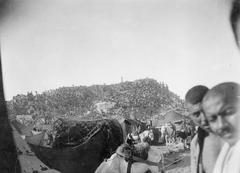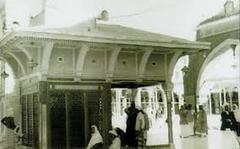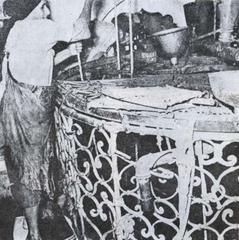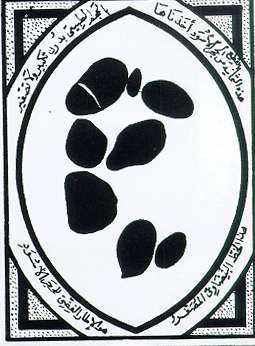
Black Stone Visiting Hours, Tickets, and Historical Significance in Mecca
Date: 14/06/2025
Introduction
The Black Stone, known in Arabic as al-Ḥajar al-Aswad, is a revered Islamic relic set in the eastern corner of the Kaaba, within the Masjid al-Haram in Mecca, Saudi Arabia. For millions of Muslims worldwide, the Black Stone represents a profound spiritual connection, symbolizing divine mercy, forgiveness, and the link between humanity and the Creator. Tradition holds that the stone descended from paradise and was placed in the Kaaba by Prophet Abraham and his son Ishmael, making it central to the rituals of Hajj and Umrah (hajjcouncil.org; learnreligions.com).
For visitors, the Black Stone embodies a blend of religious significance, historical depth, and practical considerations. While the Masjid al-Haram is open 24/7 with no entrance fee, enormous crowds—especially during Hajj and Ramadan—require thoughtful planning, adherence to etiquette, and an understanding of access policies, which allow entry only to Muslims with the necessary permits or visas (saudiarabiatours.net; cuddlynest.com; harmaincab.com; rehlat.co).
This comprehensive guide details the Black Stone’s origins, religious and historical importance, visitor information—including hours, permits, accessibility, etiquette—and recommendations for a meaningful, safe, and respectful pilgrimage (learnreligions.com; audiala.com).
Table of Contents
- Introduction
- Origins and Historical Background
- Preservation and Historical Incidents
- Religious Significance and Rituals
- Physical Description and Current State
- Visiting Guide: Hours, Permits, and Accessibility
- Safety, Etiquette, and Travel Tips
- Nearby Historical Sites and Attractions
- Frequently Asked Questions (FAQ)
- Conclusion
- Sources
Origins and Historical Background
Islamic tradition states that the Black Stone descended from paradise and was given to Prophet Abraham (Ibrahim) by the Archangel Gabriel. Abraham and his son Ishmael incorporated it as a cornerstone of the Kaaba, laying the foundation for the spiritual significance the stone holds today (hajjcouncil.org; learnreligions.com). Originally believed to be pure white, the Black Stone is said to have darkened by absorbing the sins of humanity, symbolizing spiritual purification (saudiarabiatours.net).
Preservation and Historical Incidents
Over centuries, the Black Stone has faced significant challenges. In 930 CE, it was stolen by the Qarmatians and returned over 20 years later (hajjcouncil.org; 3rooj.com). Fires, damage from sieges, and attempts at theft have fragmented it; today, the pieces are held together by a silver frame known as the Rukn (learnreligions.com). Saudi authorities continually maintain and safeguard the area, especially during peak pilgrimage seasons (3rooj.com).
Religious Significance and Rituals
The Black Stone is integral to Hajj and Umrah. Pilgrims performing tawaf—the act of circumambulating the Kaaba seven times—begin and end each circuit at the Black Stone. It is Sunnah (recommended) to kiss, touch, or gesture toward the stone, emulating Prophet Muhammad (learnreligions.com; thrillophilia.com). For many, the stone symbolizes the “right hand of God” and serves as a focal point for humility and devotion.
Ritual Practices:
- Kissing: If possible, pilgrims kiss the Black Stone.
- Touching: If unable to kiss, they touch the stone and kiss their hand.
- Gesturing: If both are difficult, raising the right hand and gesturing while reciting prayers is accepted.
Supplication example:
اللهم اَمَانَتِى اَدَّيْتُهَا وَمِيْثَاقِى تَعَاهَدْتُهُ فاشْهَدْ لِى بِالْمَوَافَاة
“O Allah, I have fulfilled my responsibility and have kept up my covenant, so testify to my loyalty.”
Physical Description and Current State
The Black Stone is a collection of seven or eight fragments set in a silver frame about 1.5 meters above the ground in the Kaaba’s eastern corner (learnreligions.com). The stone measures approximately 20 cm by 16 cm and is polished smooth from centuries of contact. Its composition is uncertain—various theories suggest meteorite, basalt, agate, or obsidian, but scientific analysis is prohibited (learnreligions.com; saudiarabiatours.net).
Visiting Guide: Hours, Permits, and Accessibility
Visiting Hours
Masjid al-Haram is open 24/7, allowing pilgrims access to the Black Stone at any time. However, early mornings and late evenings are less crowded and offer a more contemplative experience (cuddlynest.com).
Permits and Entry Requirements
- Muslim-Only Access: Non-Muslims are strictly prohibited from entering Mecca or the Masjid al-Haram (harmaincab.com; rehlat.co).
- Hajj/Umrah Permit: Pilgrims must obtain appropriate permits and visas, arranged through authorized agencies or official portals (cuddlynest.com).
- No Ticket Fee: There is no separate ticket or fee to visit the Black Stone or enter the mosque; only valid permits are required.
Accessibility
- The mosque provides ramps and wheelchair access, with special pathways for those with limited mobility. However, reaching the Black Stone itself may be challenging during busy periods; gesturing from a distance is acceptable (audiala.com).
Safety, Etiquette, and Travel Tips
Dress Code
- Men: Loose, non-revealing clothing; during pilgrimage, men wear the ihram (two white, unstitched cloths).
- Women: Modest, loose clothing covering the hair; abaya is not mandatory for non-Saudi women, but modesty is essential (audiala.com; cuddlynest.com).
- Shoes must be removed before entering the mosque.
Ritual Conduct
- Maintain silence and reverence; avoid disruptive behavior.
- Personal prayers are encouraged, but photography is generally prohibited within the mosque (audiala.com).
- Men and women perform rituals in the same area with designated zones for privacy.
- Women who are menstruating may not perform Tawaf but can supplicate from outside the area.
Crowd Management
- Peak Periods: Hajj and Ramadan bring the largest crowds (cuddlynest.com).
- Patience is vital; avoid pushing, and follow official instructions.
- Visit during off-peak hours for a smoother experience.
Health and Hygiene
- Use ablution facilities prior to entering.
- Carry only essentials and keep valuables secure.
- Medical clinics are available within the mosque complex.
Transportation
- Air: King Abdulaziz International Airport in Jeddah is the nearest airport, with taxis and shuttle buses to Mecca (cuddlynest.com).
- Road: Accessible via major highways and organized transport like Al Fateh Transport (alfatehtransport.com).
Nearby Historical Sites and Attractions
- Masjid al-Haram: The world’s largest mosque, encompassing the Kaaba and Black Stone.
- Jabal al-Nour: Site of the Cave of Hira, where Prophet Muhammad received his first revelation.
- Abraj Al Bait Towers: Home to the Clock Tower Museum.
- Zamzam Well: Source of holy water integral to pilgrimage.
- Mina, Mount Arafat, and Makkah Museum: Additional sites of religious and historical importance.
Guided tours are available for these sites, offering structured exploration and historical context.
Frequently Asked Questions (FAQ)
Q: Who can visit the Black Stone?
A: Only Muslims are allowed to visit the Black Stone and enter Mecca.
Q: What are the visiting hours?
A: Masjid al-Haram is open 24/7, but quieter times are early morning and late evening.
Q: Is there an entry fee?
A: No, but a valid Hajj or Umrah permit is required.
Q: How should I dress?
A: Modest clothing is required. Men wear ihram for pilgrimage; women should cover their hair and wear loose, long clothing.
Q: What if I cannot touch the Black Stone?
A: Gesturing towards the stone while reciting supplications is accepted.
Q: Are guided tours available?
A: Yes, many agencies offer guided packages with historical and ritual context.
Conclusion
The Black Stone of Mecca stands as an enduring emblem of faith, history, and unity for Muslims worldwide. Understanding its origins, religious symbolism, and proper visiting practices is essential for a safe, respectful, and spiritually rewarding pilgrimage. Advance preparation, cultural awareness, and adherence to mosque guidelines ensure a fulfilling journey.
For detailed guides, real-time updates, and travel tips, download the Audiala app and explore additional resources dedicated to Mecca’s holy sites.
Sources
- The Black Stone of Mecca: Historical Significance, Visitor Guide, and Pilgrimage Insights, Hajj Council
- Black Stone Mecca: Visiting Hours, Tickets, and Essential Pilgrim Tips, Cuddlynest Blog
- Visiting the Black Stone in Mecca: Hours, Tickets, and Ritual Guide, Learn Religions
- Visiting the Black Stone in Mecca: Hours, Tickets, History, and Travel Tips, Audiala
- Black Stone of Mecca, Saudi Arabia Tours
- Visiting the Black Stone in Mecca: Hours, Tickets, and Ritual Guide, Alfateh Transport
- Visiting the Black Stone in Mecca: Hours, Tickets, and Essential Pilgrim Tips, Harmain Cab
- Visiting the Black Stone in Mecca: Hours, Tickets, and Essential Pilgrim Tips, Rehlat
